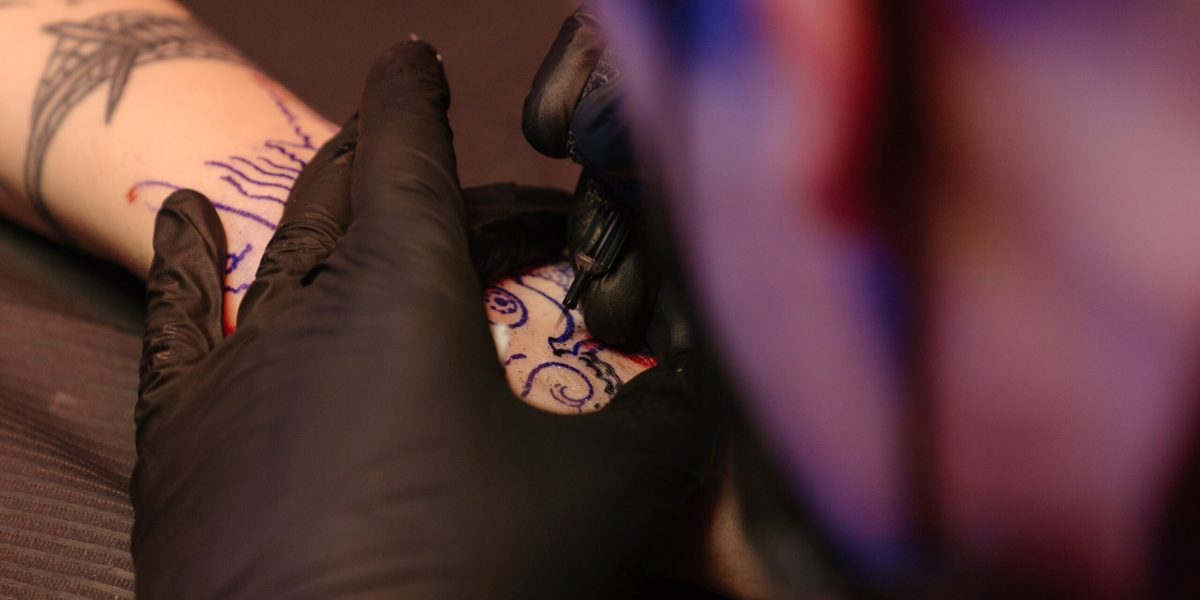Getting a tattoo is undoubtedly a unique and personal experience, with pain levels varying depending on several factors. From the location on the body to an individual’s pain tolerance, the decision to get inked involves careful consideration. In this article, we will explore the most and least painful tattoo spots, discussing the use of numbing agents, pain tolerance, the impact of line work versus color/shading, and the skill of the tattoo artist.
Numbing Cream
Before even talking about different pain levels we should mention numbing cream. Although it sounds like the savior, a magical cream that can save you the pain of your tattoo, the benefits are talked about far more than the cons. First of all, the numbing cream makes it harder for your artist to do their job. Most numbing creams use a vasoconstrictor to keep the numbing agent (Lidocaine) localized. This poses an issue as it makes the skin almost rubbery and hard to work with. So while it may numb the pain you’ll probably end up getting tattooed for longer and it may cost more because of this. Once the numbing cream wears off the shock of the pain is far more heightened. Your body doesn’t have a chance to get used to the pain like if you hadn’t used numbing cream. So the feeling tends to be more intense once the numbing is gone. There are numbing products out there that don’t contain any vasoconstrictors and can be used to successfully numb the area but just like anything they come with their own problems. No matter what you plan on using you should always talk to your tattoo artist first. Some artists are against any type of numbing and some have their own preferences for what you use.
Pain Tolerance:
Pain tolerance varies greatly from person to person. Factors such as genetics, stress levels, and overall health can influence how one perceives pain. While some may find certain areas excruciatingly painful, others might describe the same experience as tolerable. Staying hydrated and making sure you eat before your appointment can help manage your pain. Mentally preparing and remaining calm will also help with the pain, psyching yourself out will only make it worse. Understanding one’s own pain threshold is crucial in selecting an appropriate location for a tattoo.
Line Work vs. Color/Shading:
The nature of the tattoo design also contributes to the overall pain experienced during the process. Like with different pain tolerances the pain of line work vs shading is different for everyone. There is some debate on which one is more painful. Line work is more intense concentrated pain while shading is much broader. Shading goes over already raw and worked skin multiple times. Because of this the constant penetration of the needle required for shading can intensify the discomfort, making color-heavy tattoos more challenging for some individuals.
Artist Skill (Light vs. Heavy Handed):
The skill level of the tattoo artist plays a significant role in the pain experienced during the tattooing process. A light-handed artist employs a gentler touch, resulting in a less painful experience. Conversely, a heavy-handed artist may cause more discomfort, especially during extended sessions. Choosing a skilled and experienced artist can greatly impact the overall satisfaction with the tattooing process.
Most Painful Tattoo Spots:
Ribs: The rib cage area, especially the sides, can be quite painful due to the proximity of bones and thin skin.
Spine: Tattooing along the spine, particularly the lower and upper regions, can be uncomfortable as the skin is close to the bone.
Ankles and Shins: The bony structure and thinner skin in these areas can make the tattooing process more painful.
Knees and Elbows: The joints have less flesh and more sensitive skin, which can result in increased pain during tattooing.
Hands and Fingers: The skin on the hands and fingers is thin, and there is less muscle to cushion the needle, making this area more sensitive.
Feet and Toes: Similar to hands, the feet and toes have thin skin and less muscle, making the tattooing process more painful.
Armpits: The skin in the armpit area is sensitive and can be more painful to tattoo.
Groin Area: Tattooing in the groin area can be uncomfortable due to sensitivity and proximity to nerve endings.
Still hurts a lot:
Upper Inner Thigh: sensitive skin that isn’t used to being agitated
Neck: The neck is still a sensitive area but is more manageable if you stay away from the face and spine.
Still hurts but only a little:
Outer Thigh: The Thigh has more muscle, fat and thicker skin that make for a less painful tattoo
Forearm: This is a really good place for a first tattoo that is one of the least sensitive areas.
Outer Arm: Skin offers more space than the forearm without too much more pain
Calves: The calf offers a lot of muscle to work with, leading to less painful tattoos
Back: less sensitive with fewer nerve endings, if you stay away from the spine.
Conclusion:
Choosing the location for a tattoo is a personal decision that involves careful consideration of pain tolerance, design complexity, and the artist’s skill level. While certain areas are known for being more painful, individual experiences may vary. No matter where you choose to place your tattoo, you’re going to experience some level of pain. It doesn’t hurt to discuss your pain tolerance with your tattoo artist beforehand and consider starting with a less sensitive area for your first tattoo. Ultimately, the journey to inked skin is a unique and rewarding adventure, with the pain serving as a testament to the commitment to self-expression.
